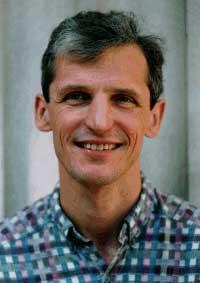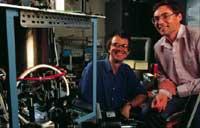Nobel Prize in Physics for physicists Eric A. Cornell, Wolfgang Ketterle and Carl E. Wieman

In 1924 the Indian physicist Satyendra Nath Bose performed a series of calculations on light particles. The results of these calculations were sent to Albert Einstein and between them developed the theory of a new state of matter. The process is similar to the passage from gas to liquid, so it was considered a condensation. Therefore, this new situation is called condensed Bose-Einstein.
According to the theory, cooling the bosons below a temperature allows many of them to accumulate in the fundamental quantum state, that is, at the level of minimum energy. The obstacle to the application of this same idea to fermions is the principle of exclusion of Pauli, so it is not possible to obtain condensates similar to this type of particles.
At the time of Bose and Einstein there was no practical way to get this condensate. However, in 1995, using laser cooling techniques, it was performed in a laboratory. Eric A. Cornell and Carl E. The experiment was conducted by Wieman, placing the rubidium atoms at a temperature of 20 nanocelvin. Wolfgang Ketterle performed the same experiment using sodium atoms.

The condensate Bose-Einstein has already searched for applications to make chips with quantum computers, among others.
In early December, for this research, three scientists will receive this year's Nobel Prize in Physics.
Buletina
Bidali zure helbide elektronikoa eta jaso asteroko buletina zure sarrera-ontzian











